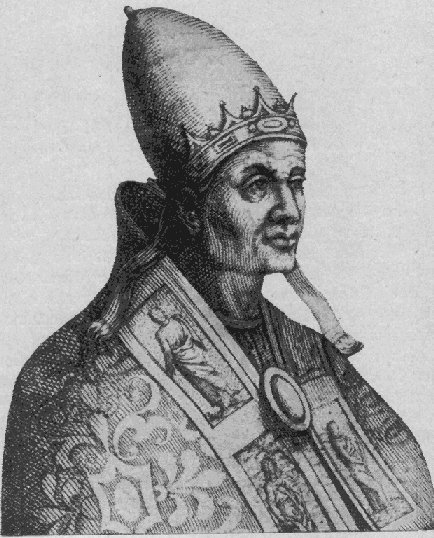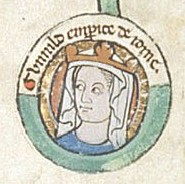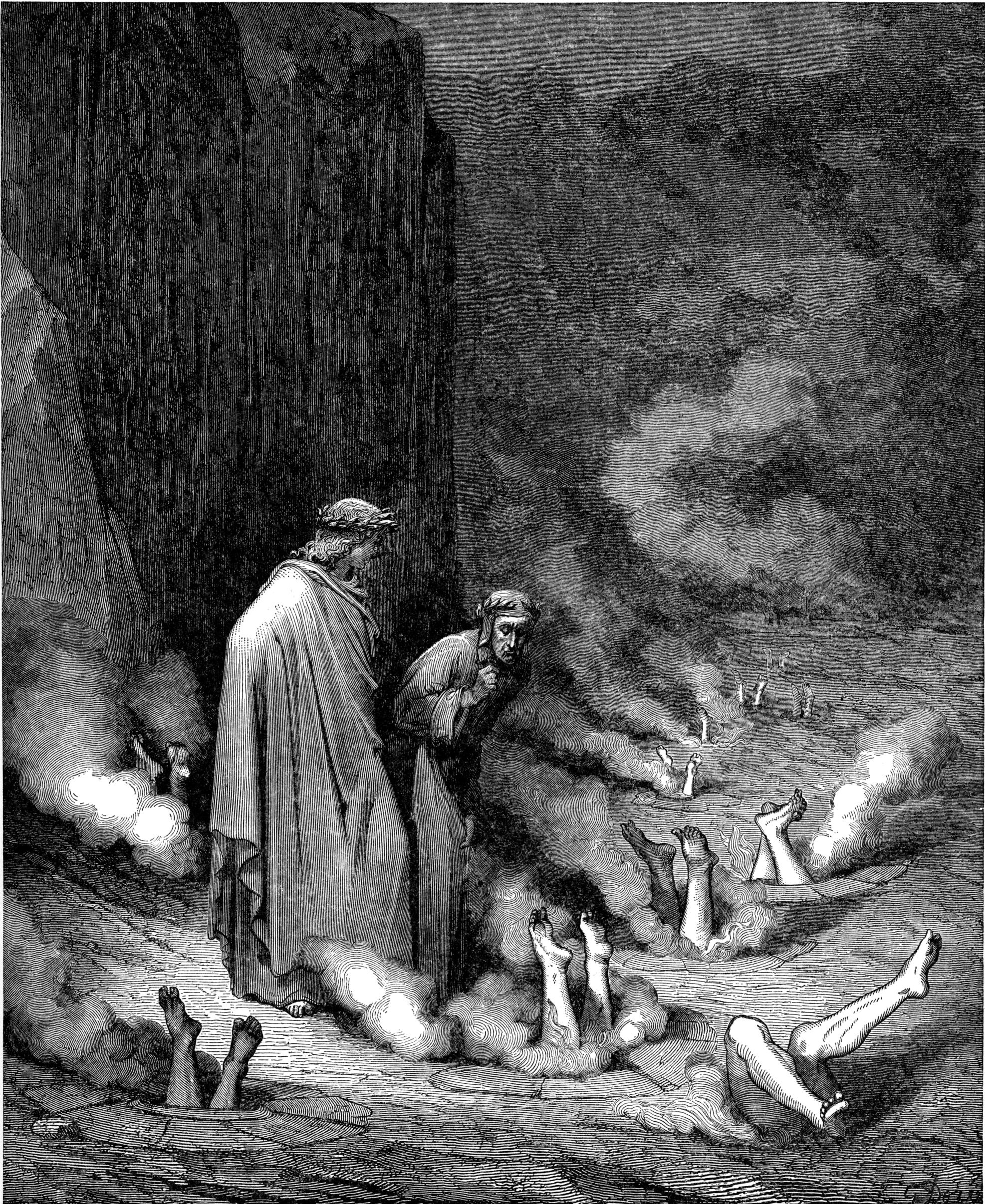|
Investiture Contest
The Investiture Controversy, also called Investiture Contest (German: ''Investiturstreit''; ), was a conflict between the Church and the state in medieval Europe over the ability to choose and install bishops (investiture) and abbots of monasteries and the pope himself. A series of popes in the 11th and 12th centuries undercut the power of the Holy Roman Emperor and other European monarchies, and the controversy led to nearly 50 years of conflict. It began as a power struggle between Pope Gregory VII and Henry IV (then King, later Holy Roman Emperor) in 1076. The conflict ended in 1122, when Pope Callixtus II and Henry V, Holy Roman Emperor, Emperor Henry V agreed on the Concordat of Worms. The agreement required bishops to swear an oath of fealty to the secular monarch, who held authority "by the lance" but left selection to the church. It affirmed the right of the church to invest bishops with sacred authority, symbolized by a Ecclesiastical ring, ring and crozier, staff ... [...More Info...] [...Related Items...] OR: [Wikipedia] [Google] [Baidu] |
Henry I Of England
Henry I (c. 1068 – 1 December 1135), also known as Henry Beauclerc, was King of England from 1100 to his death in 1135. He was the fourth son of William the Conqueror and was educated in Latin and the liberal arts. On William's death in 1087, Henry's elder brothers Robert Curthose and William Rufus inherited Normandy and England, respectively, but Henry was left landless. He purchased the County of Cotentin in western Normandy from Robert, but his brothers deposed him in 1091. He gradually rebuilt his power base in the Cotentin and allied himself with William Rufus against Robert. Present at the place where his brother William died in a hunting accident in 1100, Henry seized the English throne, promising at his coronation to correct many of William's less popular policies. He married Matilda of Scotland and they had two surviving children, Empress Matilda and William Adelin; he also had many illegitimate children by his many mistresses. Robert, who invaded from Normandy ... [...More Info...] [...Related Items...] OR: [Wikipedia] [Google] [Baidu] |
Antipope Benedict X
Benedict X (died 1073/1080), born Giovanni, was elected to succeed Pope Stephen IX on 5 April 1058, but was opposed by a rival faction that elected Nicholas II. He fled Rome on 24 January 1059 and is today generally regarded as an antipope.Mary Stroll, ''Popes and Antipopes: The Politics of Eleventh Century Church Reform'' (Brill, 2012), pp. 69–71. He was a son of Guido, Lord of Poli who was the youngest son of Alberic III, Count of Tusculum, a member of the dominant political dynasty in the region at that time.Gregorovius, p. 111. Giovanni was a nephew of the notorious Pope Benedict IX, who was deposed in 1048. Benedict X reportedly later was given the nickname of ''Mincius'' (thin) due to his ignorance. His mother was present at his trial in April 1060. Biography Giovanni, Bishop of Velletri, was created a cardinal by Pope Leo IX in 1050. He was highly esteemed, however, by those who wanted to reform the Church, and was one of five men proposed by Cardinal Frederick of Lorrain ... [...More Info...] [...Related Items...] OR: [Wikipedia] [Google] [Baidu] |
Tusculan Papacy
The Tusculan Papacy was a period of papal history from 1012 to 1048 where three successive relatives of the counts of Tusculum were installed as pope. Background Count Theophylact I of Tusculum, his wife Theodora, and daughter Marozia held great sway over the appointment of popes from 904 to 964. The lovers of Theodora and Marozia, as well as the son and grandson of Marozia, rose to the papacy during this period. However, a Count of Tusculum had not yet attempted to appoint ''himself'' as pope until 1012. Their rivals, the Crescentii had taken over the papacy from 974 to 1012. According to Cushing, "in many ways, increasing respect for papal authority from the mid-tenth century to mid-eleventh centuries can be best viewed through the spectrum of two Roman families: the Crescentians and the Tusculans, whose control of the papacy would have important ramifications for both the control and direction of reform."Cushing, 2005, p. 61. Both the Crescentii and the Counts of Tusculum were ... [...More Info...] [...Related Items...] OR: [Wikipedia] [Google] [Baidu] |
Henry III, Holy Roman Emperor
Henry III (28 October 1016 – 5 October 1056), called the Black or the Pious, was Holy Roman Emperor from 1046 until his death in 1056. A member of the Salian dynasty, he was the eldest son of Conrad II and Gisela of Swabia. Henry was raised by his father, who made him Duke of Bavaria in 1026, appointed him co-ruler in 1028 and bestowed him with the duchy of Swabia and the Kingdom of Burgundy ten years later in 1038. The emperor's death the following year ended a remarkably smooth and harmonious transition process towards Henry's sovereign rule, that was rather uncharacteristic for the Ottonian and Salian monarchs. Henry succeeded Conrad II as Duke of Carinthia and King of Italy and continued to pursue his father's political course on the basis of ''virtus et probitas'' (courage and honesty), which led to an unprecedented sacral exaltation of the kingship. In 1046 Henry ended the papal schism, was crowned Emperor by Pope Clement II, freed the Vatican from dependence on the Roma ... [...More Info...] [...Related Items...] OR: [Wikipedia] [Google] [Baidu] |
Pope Benedict IX
Pope Benedict IX ( la, Benedictus IX; c. 1012 – c. 1056), born Theophylactus of Tusculum in Rome, was the bishop of Rome and ruler of the Papal States on three occasions between October 1032 and July 1048. Aged approximately 20 at his first election, he is one of the youngest popes in history. He is the only man to have been Pope on more than one occasion and the only man ever to have sold the papacy. He was the nephew of his immediate predecessor, John XIX. In October 1032, Benedict's father obtained his election through bribery. However, his reputed dissolute activities provoked a revolt on the part of the Romans. Benedict was driven out of Rome and Sylvester III elected to succeed him. Some months later, Benedict and his supporters managed to expel Sylvester. Benedict then decided to resign in favor of his godfather, Gregory VI, provided he was reimbursed for his expenses. Benedict subsequently had second thoughts and returned, and attempted to depose Gregory VI. A number o ... [...More Info...] [...Related Items...] OR: [Wikipedia] [Google] [Baidu] |
Otto I, Holy Roman Emperor
Otto I (23 November 912 – 7 May 973), traditionally known as Otto the Great (german: Otto der Große, it, Ottone il Grande), was East Francia, East Frankish king from 936 and Holy Roman Emperor from 962 until his death in 973. He was the oldest son of Henry the Fowler and Matilda of Ringelheim. Otto inherited the Duchy of Saxony and the kingship of the Germans upon his father's death in 936. He continued his father's work of unifying all Germans, German tribes into a single kingdom and greatly expanded the king's powers at the expense of the aristocracy. Through strategic marriages and personal appointments, Otto installed members of his family in the kingdom's most important duchies. This reduced the various dukes, who had previously been co-equals with the king, to royal subjects under his authority. Otto transformed the church in Germany to strengthen royal authority and subjected its clergy to his personal control. After putting down a brief civil war among the rebellious ... [...More Info...] [...Related Items...] OR: [Wikipedia] [Google] [Baidu] |
Ottonian Dynasty
The Ottonian dynasty (german: Ottonen) was a Saxon dynasty of German monarchs (919–1024), named after three of its kings and Holy Roman Emperors named Otto, especially its first Emperor Otto I. It is also known as the Saxon dynasty after the family's origin in the German stem duchy of Saxony. The family itself is also sometimes known as the Liudolfings (), after its earliest known member Count Liudolf (d. 866) and one of its most common given names. The Ottonian rulers were successors of the Germanic king Conrad I, who was the only Germanic king to rule in East Francia after the Carolingian dynasty and before this dynasty. The Ottonians are associated with the notable military success that transformed the political situation in contemporary Western Europe: "It was the success of the Ottonians in molding the raw materials bequeathed to them into a formidable military machine that made possible the establishment of Germany as the preeminent kingdom in Europe from the tenth th ... [...More Info...] [...Related Items...] OR: [Wikipedia] [Google] [Baidu] |
Papal Selection Before 1059
The selection of the pope, the bishop of Rome and supreme pontiff of the Roman Catholic Church, prior to the promulgation of '' In nomine Domini'' in 1059 varied throughout history. Popes were often appointed by their predecessors or by political rulers. While some kind of election often characterized the procedure, an election that included meaningful participation of the laity was rare, especially as the popes' claims to temporal power solidified into the Papal States. The practice of papal appointment during this period would later result in the ''jus exclusivae'', i.e., a right to veto the selection that Catholic monarchs exercised into the twentieth century. The absence of an institutionalized procedure of papal succession facilitated religious schism, and the Catholic Church currently regards several papal claimants before 1059 as antipopes. Further, the frequent requirement of political approval of elected popes significantly lengthened periods of ''sede vacante'', i.e., tr ... [...More Info...] [...Related Items...] OR: [Wikipedia] [Google] [Baidu] |
Divine Right Of Kings
In European Christianity, the divine right of kings, divine right, or God's mandation is a political and religious doctrine of political legitimacy of a monarchy. It stems from a specific metaphysical framework in which a monarch is, before birth, pre-ordained to inherit the crown. According to this theory of political legitimacy, the subjects of the crown have actively (and not merely passively) turned over the metaphysical selection of the king's soul – which will inhabit the body and rule them – to God. In this way, the "divine right" originates as a metaphysical act of humility and/or submission towards God. Divine right has been a key element of the legitimisation of many absolute monarchies. Significantly, the doctrine asserts that a monarch is not accountable to any earthly authority (such as a parliament) because their right to rule is derived from divine authority. Thus, the monarch is not subject to the will of the people, of the aristocracy, or of any other esta ... [...More Info...] [...Related Items...] OR: [Wikipedia] [Google] [Baidu] |
Simony
Simony () is the act of selling church offices and roles or sacred things. It is named after Simon Magus, who is described in the Acts of the Apostles as having offered two disciples of Jesus payment in exchange for their empowering him to impart the power of the Holy Spirit to anyone on whom he would place his hands. The term extends to other forms of trafficking for money in "spiritual things". Origin The purchase or sale of ecclesiastical office was condemned from the fifth century, but it was only in the sixth century that it was associated with the figure of Simon Magus in the Book of Acts. Key in making this association was Pope Gregory I, who labelled such exchanges as the "simoniac heresy". Simony in the Middle Ages Although considered a serious offense against canon law, simony is thought to have become widespread in the Catholic Church during the 9th and 10th centuries. In the eleventh century, it was the focus of a great deal of debate. Central to this debat ... [...More Info...] [...Related Items...] OR: [Wikipedia] [Google] [Baidu] |
Bishop
A bishop is an ordained clergy member who is entrusted with a position of authority and oversight in a religious institution. In Christianity, bishops are normally responsible for the governance of dioceses. The role or office of bishop is called episcopacy. Organizationally, several Christian denominations utilize ecclesiastical structures that call for the position of bishops, while other denominations have dispensed with this office, seeing it as a symbol of power. Bishops have also exercised political authority. Traditionally, bishops claim apostolic succession, a direct historical lineage dating back to the original Twelve Apostles or Saint Paul. The bishops are by doctrine understood as those who possess the full priesthood given by Jesus Christ, and therefore may ordain other clergy, including other bishops. A person ordained as a deacon, priest (i.e. presbyter), and then bishop is understood to hold the fullness of the ministerial priesthood, given responsibility b ... [...More Info...] [...Related Items...] OR: [Wikipedia] [Google] [Baidu] |



.jpg)




